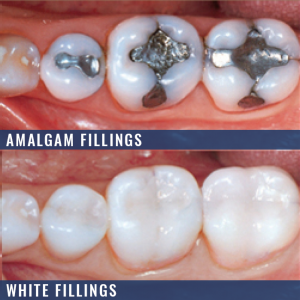Dental fillings

Dental fillings are a common dental treatment used to repair teeth that have been damaged by decay, also known as cavities. The filling material is used to replace the decayed or damaged portion of the tooth, restoring its shape, function, and strength.
The procedure for getting a dental filling typically involves numbing the area around the tooth with a local anesthetic to prevent pain and discomfort. The dentist will then remove the decayed or damaged portion of the tooth using a dental drill or laser, and clean the area to remove any remaining debris or bacteria.
Once the tooth is prepared, the dentist will place the filling material into the cavity and shape it to match the natural contour of the tooth. The filling material is then hardened using a special light or chemical reaction, and the tooth is polished to restore its natural appearance.
There are several types of filling materials available, including amalgam (silver), composite resin (tooth-colored), porcelain, and gold. The type of filling material used will depend on several factors, such as the location and size of the cavity, the patient's preference, and the dentist's recommendation.
Dental fillings are a common and effective treatment for repairing decayed or damaged teeth, and can help to prevent further decay and tooth loss. However, it's important to maintain proper oral hygiene practices, such as brushing and flossing, and to visit the dentist regularly for check-ups and cleanings to prevent the need for additional dental treatments.